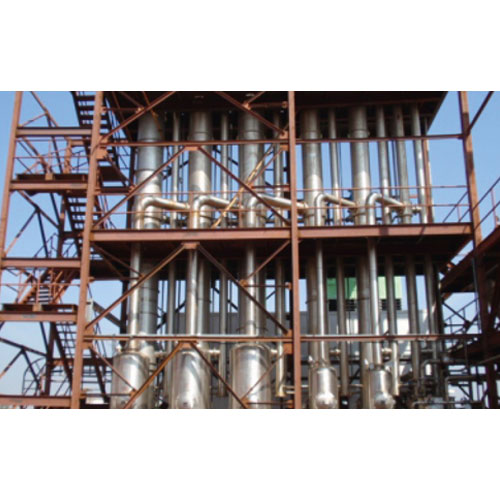 Click for Enquiry
Click for Enquiry

"SSP" has developed systems to treat such effluents, through evaporation & drying technologies. Stripper column is used to remove the solvent from High COD stream. With the help of this technology, effluent concentrate is dried to a baggable powder with 6 - 8% moisture content, which can be reused as a land filling / disposal.
Grain stillage is fed into the decanter centrifuge system. Wet cake & thin liquor gets separated in the system. This slop is fed in a multistage vacuum evaporator to concentrate up to 40% solids concentration. The total evaporation takes place under vacuum and the vapors generated in the system are re-used to economize steam consumption. Condensate water generated from the evaporation system is clear and can be used for the process.
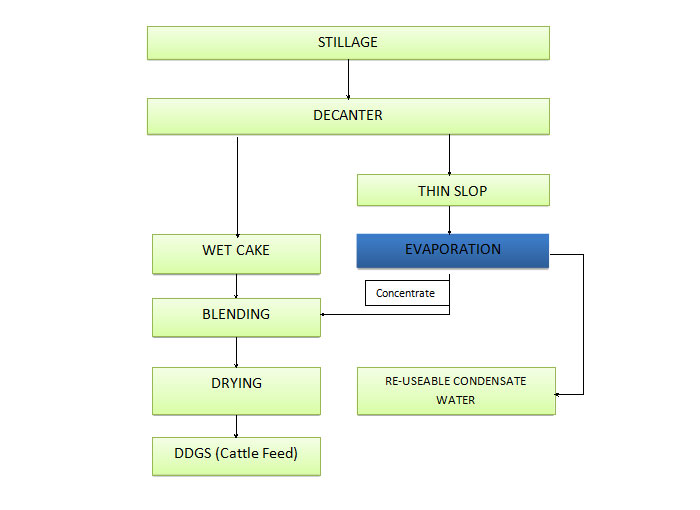
Direct spent wash as well as bio-methanated effluent is concentrated in a multistage vacuum evaporator to 40-60% solids. The total process is under vacuum and the vapors generated in the system are re-compressed in a TVR/MVR to economize steam consumption. Condensate water generated from the evaporation system is clear and recyclable for the process.
The concentrated effluent is mixed with bagasse / rice husk and dried in a Rotary Dryer to generate mixed fuel. This mixed fuel is burnt in a boiler to generate steam and power.
The concentrated Bio-methenated effluent is dried in a Spray Dryer. The powder generated from spray dryer is mixed with coal and the mixture is burnt in a boiler to generate steam. It can also be marketed as potash rice fertilizer.
High pressure steam is used in a turbine system to generate power. The back pressure / bleed steam can be used in the evaporation system and the generated power is used to operate the evaporation and drying system. Surplus power and steam will be available for distillery operation and other uses.

The concentrated liquor is then mixed with wet cake and dried in rotary dryer to generate DDGS, which has high nutrition value and can be used as cattle feed.
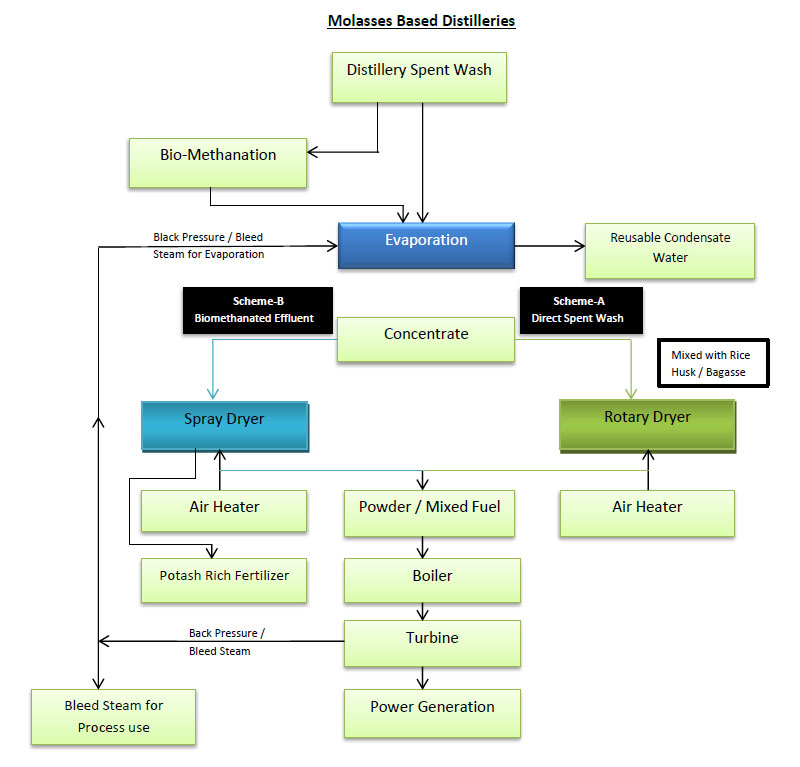
Textile dyeing industries need huge quantity of water for textile dyeing, which they normally pump out repeatedly from the ground / natural resources, resulting in depletion of ground water level.
After dyeing, the waste water generated is called Dye Bath water and after washing, the waste water generated is called wash water. Dye Bath contains higher solids in the range of 4-5% whereas wash waster contains only 0.5-1% solids. This effluent is normally discharged to rivers & natural water streams creating enormous environmental pollution & ecological hazards. When released in open land the effluent seeps into the groundwater which results in damage to agricultural crops, causes skin disorder and spoils ground water.
“SSP” has taken up the cause as a challenge to provide a zero liquid discharge solution by which textile industry can treat the effluent & reuse the same water for the dyeing process and also the salt used for dyeing can be reused or dumped as solid effluent after dyeing. This technology saves precious water from getting polluted, thus saving the environment from ecological hazards.
The technology offered by “SSP” can overcome all problems pertaining to environmental pollution in respect to textile dyeing industries.
This technology converts entire quantity of reusable water and salt by using evaporation & separation technology.
Recovery of Glauber’s salt (Na2SO4.10H2O)
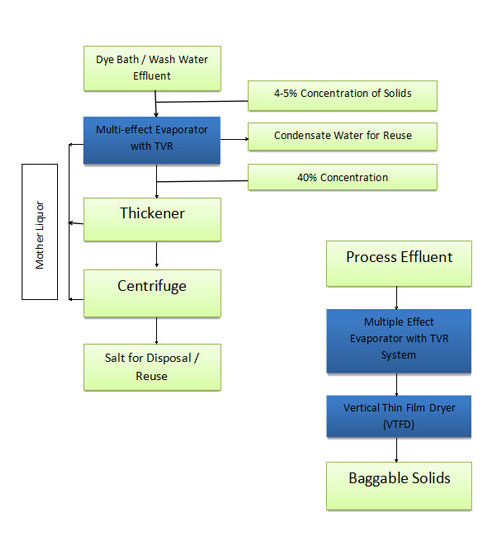
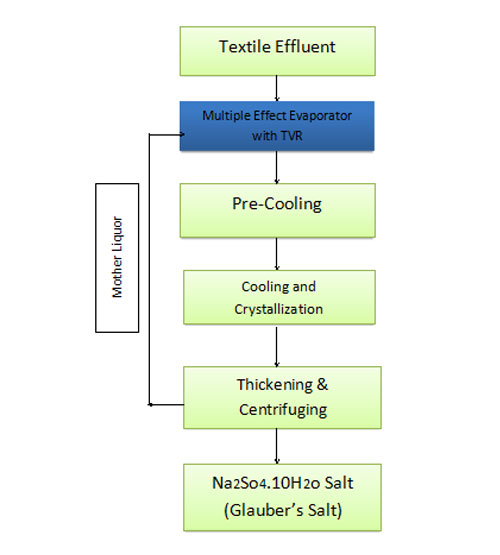
Pharmaceutical and bulk drug industries emanate effluent which consists of high organic contents with high COD. “SSP” has developed systems to treat such effluents, through evaporation & drying technologies. Stripper column is used to remove the solvent from High COD stream. With the help of this technology, effluent concentrate is dried to a bag gable powder with 6-8% moisture content, which can be reused as a land filling / disposal.
For the purpose of treating this effluent, Evaporation and Drying methods are used. A combination of Industrial Evaporators like Falling Film Evaporator, Forced Circulation Evaporator and the Industrial Dryers like Vertical Thin Film Dryer are used. Other auxiliary techniques such as stripping of solvents, centrifuging, filtration, and incineration are also employed depending upon the characteristics of the effluent.
The effluent containing high amount of organics is heated in a reboiler and passed through a Stripper Column to strip off the maximum low boiling organic solvents and their vapors are condensed using a condenser. These condensed vapors are partially refluxed back to the stripper to enrich the column and rest of the condensate (solvent) is collected separately and can be incinerated in an incinerator for making the facility a complete Zero Pollution Plant.
The output liquid stream from the bottom of the stripper column which is now almost free of low boiling solvents enters the Multiple Effect Film Evaporator / Forced Circulation Evaporator or Combination of two for further concentration. After concentration in the Evaporator, we get a concentrated stream of effluent which can be then further concentrated or dried in different types of evaporators and dryers depending upon the actual composition of the individual stream.
The condensate water obtained from the Falling Film Evaporator is of very low COD. In case further reduction in COD is desired, then various techniques can be used like activated carbon treatment or aeration with a high pressure blower for prolonged periods.
Finally, whole of the effluent is converted into solid / sludge form so that it can be disposed using various ways like land filling. SSP has strong background in providing ETP solutions.
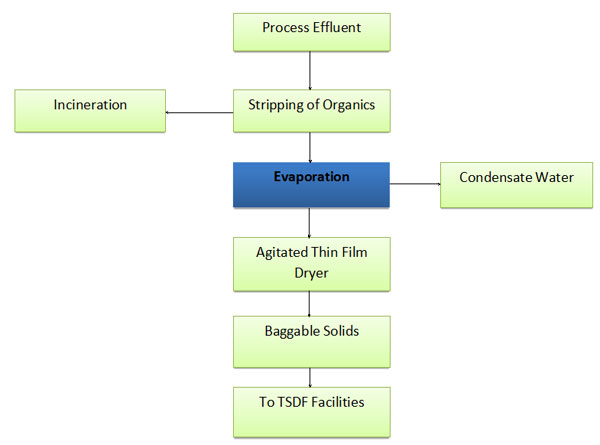
In pulp mill spent liquor produced during washing of pulp after cooking with caustic is highly toxic and this cannot be discharged. So its treatment in recovery plant is must. Valuable inorganic chemicals recovery is also done to keep pulping cost under control.
Recovering inorganic chemicals is possible only by incineration of black liquor but since the liquor is in very dilute form containing as low as 8 to 10% solids, it is not economical to incinerate directly. For burning this liquor, it is concentrated in a Multiple Effect Evaporator to the desired concentration i.e. 65-70% in case of conventional recovery or 50% in case of non-conventional systems and then subsequently incinerated.
SSP can supply energy efficient evaporators to meet the requirement of concentration up to 50% or 65-70%.
SSP has already supplied evaporators to a few companies where the evaporators are performing not only with better steam economy but also with reduced time for cleaning.
SSP evaporators are highly energy efficient and evaporate 7kg of water per kg of steam for concentration up to 50% in a seven effect plant. Also, the plant can be cleaned once in 25-30 days.
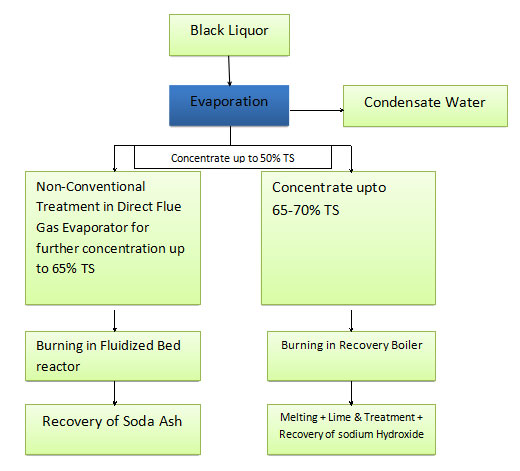
Food Projects
Non-Food Projects
Other Projects / Equipment